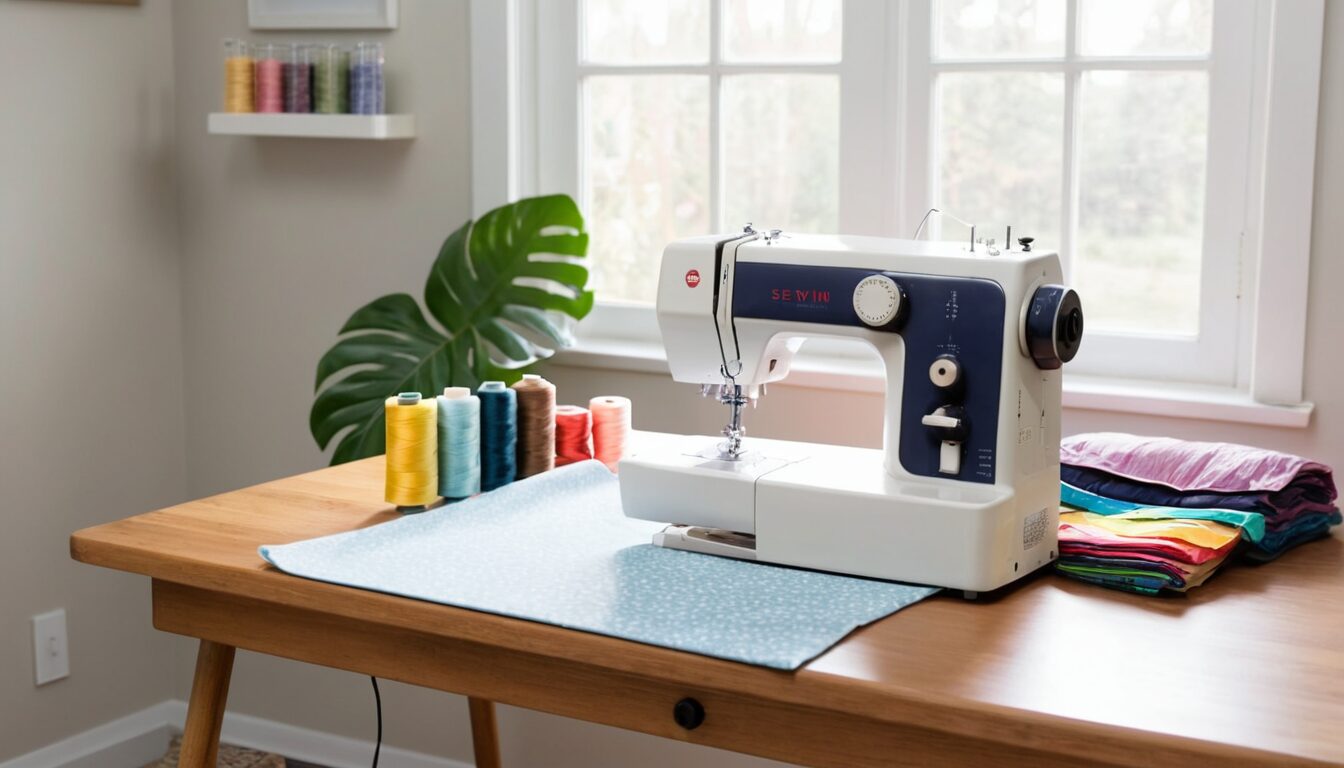
Choosing your first sewing machine can be both exciting and overwhelming, especially with the many models and features available today. If you’re just starting out, understanding what to look for in a sewing machine will make the selection process much easier and ensure you’re set up for success. Here’s a detailed guide to help you make an informed choice as a beginner.
Understand Your Sewing Needs
Before diving into the options, think about what you plan to sew. Here are some questions to consider:
- Will you be sewing basic garments, quilting, or working with heavy materials?
- How frequently do you plan to use the machine?
- Do you want a machine primarily for personal projects or for potential business purposes?
Before diving into the options, think about what you plan to sew. Here are some questions to consider:
By clarifying your goals, you’ll be better equipped to identify a machine with the appropriate capabilities, helping you avoid spending extra on features you may not need.
Choose Between Mechanical and Computerized Machines
- Mechanical Machines: These machines have manual controls and are often more affordable and straightforward to use. They’re excellent for basic sewing tasks and are generally low maintenance.
- Computerized Machines: These machines are equipped with more advanced features, like automatic stitch selection, digital displays, and pre-programmed stitches. While these can be great for experienced sewists, they can sometimes be overwhelming (and costly) for beginners.
If you’re looking for a reliable starter machine, a mechanical model might be the best choice.
Focus on Essential Features for Beginners
Beginners don’t need every advanced feature under the sun. Look for these essentials:
- Straight Stitch and Zigzag Stitch: These two are fundamental and will cover most of your sewing needs as a beginner.
- Adjustable Stitch Length and Width: Being able to adjust your stitch length and width gives you more control over your projects.
- Automatic Needle Threader: This feature can save time and reduce frustration.
- Drop-in Bobbin: A drop-in bobbin is more user-friendly and makes it easier to monitor your thread levels.
- One-Step Buttonhole: This feature is invaluable if you plan to sew clothing.
Avoid getting sidetracked by machines offering 100+ stitch options. At this stage, fewer, well-chosen features will make learning much smoother.
Set a Realistic Budget
Beginner sewing machines can range widely in price. You’ll find models as low as $100, while high-end ones can go into the thousands. Generally, setting a budget between $150 to $300 will give you a machine with quality, essential features without unnecessary extras.
Industrial machines for more heavy-duty sewing projects may have a higher price point, but unless you’re planning on working with heavier fabrics like denim or leather frequently, a standard model will suit most beginners.
Consider Portability and Storage
If you don’t have a dedicated sewing space or plan to move your machine around, portability matters. Look for lightweight models that are easier to carry or store away. Compact machines are ideal for beginners, as they’re easy to store and set up when you’re ready to sew.
Read Reviews and Watch Demonstrations
Customer reviews can provide insight into a machine’s performance and potential issues. Video demonstrations are particularly helpful as you can see how a machine operates in real-time. Sites like YouTube and sewing forums can offer a wealth of information and honest reviews from real users.
Additionally, check reviews that focus on durability, ease of use, and serviceability. Reliable brands for beginner-friendly machines include Brother, Singer, and Janome, which offer quality entry-level models.
Check for After-Sales Support and Warranty
Even the best sewing machines may occasionally need servicing. Ensure the machine you choose offers a warranty and good customer support. Some brands have sewing machine dealers in various locations that can handle maintenance, repairs, or even give beginner classes to help you start.
When buying an industrial machine, after-sales support is particularly important, as the components may require specialized knowledge to repair.
Test the Machine if Possible
If you have a local sewing store nearby, visiting in person to test a few models is ideal. Feeling the machine, listening to how it runs, and testing different fabrics can help you identify one that feels right.
Look for Future Expandability
While starting simple is key, it’s also worth considering if the machine can grow with you. Features like free-arm sewing for small projects, compatibility with attachments, or options for quilting can add versatility. A machine that allows you to expand your capabilities as you grow will ultimately serve you longer.
Conclusion
Choosing your first sewing machine as a beginner doesn’t have to be complicated. By focusing on essential features, setting a realistic budget, and considering your specific needs, you’ll find a machine that is perfect for getting started. Remember, the right sewing machine should make learning fun and open the door to countless creative projects. Whether you’re starting with simple home projects or dreaming of industrial-level creations, taking the time to select a machine that fits your needs will ensure a rewarding sewing experience.
